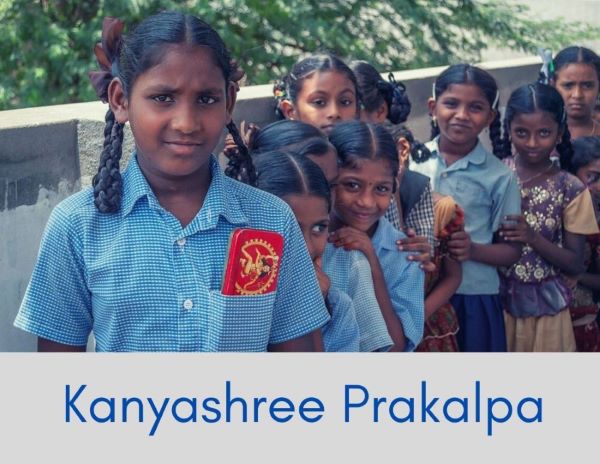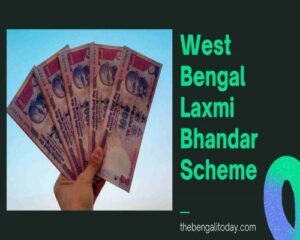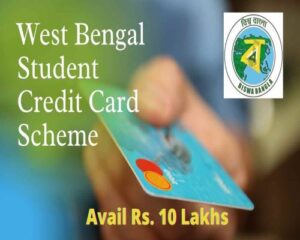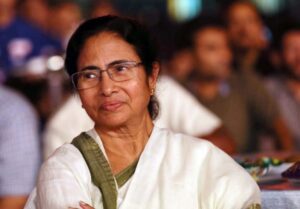Kanyashree West Bengal’s flagship scheme empowers girls from socio-economically disadvantaged families by providing scholarships to girl students. Kanyashree scheme K1 & K2 is a conditional cash transfer (CCT) Scheme that concentrates on underprivileged girls of West Bengal aged between 13 to 18. The Kanyashree K3 scheme is for girl students currently studying at colleges and want to pursue higher education.

Kanyashree Prakalpa is the brainchild of Chief Minister Mamata Banerjee. On October 1, 2013, the West Bengal Department of Women Development, Social Welfare, and Child Development launched this scholarship program. Later, Kanyashree K3 was introduced in the year 2017.
Kanyashree Prakalpa has received national and international acclaim for its design and features of good governance. The West Bengal government received the prestigious United Nations Public Service Award in 2017 for the Kanyashree scheme that empowers the girl from the lowest rungs of society.
Why Kanyashree scholarship scheme was introduced?
Kanyashree Prakalpa aims to prevent child marriages and reduce the number of girls dropping out of school.
In India, the legal marriage age for girls is 18 and 21 for boys under the Prohibition of Child Marriage Act, 2006 (PCMA). Even though this Act has been in effect for several years, child marriage is still prevalent in West Bengal.
According to the DLHS-3, 2007-08 report, West Bengal ranked fifth in the country in terms of the prevalence of child marriage, with nearly every second girl becoming a child bride (54.7 percent ).
Child marriage and school dropouts are inextricably linked. Early marriage causes girls to drop out of school, limiting their opportunities for future development.
In West Bengal, girls’ school attendance falls from 85 percent in the age group 6-10 years to 33 percent in the age group 15-17 years. (2005-06, NFHS 3) It means that more adolescent girls are dropping out of school. Dropout rates between Classes I-X were found to be as high as 47.9%.
This low level of transition from elementary to secondary school among girls was a major source of concern.
Child marriage is a gendered practice that affects far more girls than boys. It is possibly the most common form of sexual abuse of minor girls. It is not only harmful to their health and the health of their children but also leave them financially and socially disadvantaged and vulnerable to child labor, trafficking, and other types of exploitation.
Furthermore, it was discovered that the districts in West Bengal with the highest incidence of child marriage are also those with the highest incidence of human trafficking.
Objective of Kanyashree scheme
The primary goal of the Kanyashree scheme is to empower girls from socio economically disadvantaged families by
- incentivizing them to stay in school for a longer period and complete their education, thereby, giving them a better footing in both the social and economic spheres.
- Disincentivizing marriage until the age of 18, the legal marriage age, thereby lowering the risks of early pregnancies, associated risks of maternal and child mortality, and other debilitating health conditions, including malnutrition.
It employs the simple approach of conditional cash transfer. This tried-and-true mechanism has shown a high degree of success in transforming the lives of children and adolescents in several countries around the world.
What is Kanyashree scheme?
Kanyashree has three cash transfer components:
- The first is an annual scholarship of Rs. 1000/- to be paid to girls between the ages of 13 and 18 (studying in Class VIII equivalent or above) for each year they remained in school, provided they were unmarried at the time.
- The second scheme K2 is a one time grant of Rs. 25,000 to a girl between the ages of 18 and 19, provided she is enrolled in an educational institution and is unmarried at the time.
- The third scholarship scheme K3 is for girls students who want to pursue higher education(Postgraduate and above). Students in the Science stream receive a monthly scholarship of Rs. 2500, while students in the Arts stream receive a monthly scholarship of Rs. 2000. The students who have registered for the K2 scheme are only eligible for the K3 scheme. There is no upper age limit to apply for Kanyashree K3 Prakalpa applicants.
Kanyashree scholarships are only available to girls from families with an annual income of Rs. 1,20,000/- or less, because children from low-income families are more prone to child marriage. The annual scholarship or one-time grant will be paid to the recipients via a bank account fund transfer.
Note – The income criterion is waived for girls with special needs, orphans, and girls in J. J. Homes. Girls with special needs who are in a class lower than class VIII are also eligible to apply for the annual scholarship.
How Kanyashree scheme is making an impact?
The scheme’s positive effects include increased education and postponed marriages. It also boosts girls’ social power and self-esteem.
The scheme provides more than just financial assistance. It is a financial inclusion tool as well as an empowerment tool for adolescent girls. The scheme’s benefits are paid directly to bank accounts in the girls’ names, leaving the decision of how to spend the money in their hands.
As more girls stay in school, it is expected that they will take advantage of the opportunity to gain skills and knowledge that will help them become economically independent.
Even if girls marry soon after turning 18, it is expected that their education and improved social and emotional development will provide them with a stronger foundation in their adult lives.
And, as entire generations of women marry only after achieving some degree of economic independence, it is expected that child marriage will be completely eradicated, and women will achieve their right to health, education, and socioeconomic equality.
Kanyashree Prakalpa is only applicable to the state of West Bengal. Eligibility requirements have been kept to a bare minimum. The girl must be a resident of the West Bengal state. She is enrolled in West Bengal-registered and government-recognized educational institutions.
Kanyashree Divas
Kanyashree Divas is celebrated on August 14 to promote the scheme throughout Bengal.






